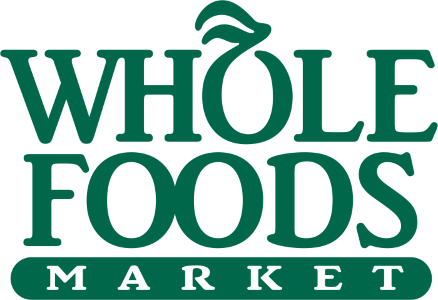Key Findings
- Whole Foods Market has safer chemicals policies for household cleaning products, currently known as Household Cleaning Quality Standards; and for beauty/body care products, known as Body Care Quality Standards. The company disclosed in December 2020 and January 2021 that it adopted a restricted substance list for “all Food Service and Exclusive Brand packaging…that prohibits intentionally added PFAS, ortho-phthalates, bisphenols, heavy metals, perchlorate, benzophenone, and residual solvents” as well as arsenic, and has already discontinued or reformulated food service packaging containing intentionally added PFAS. The company is “also implementing a policy to ban nonrecyclable materials, including PS, PVC, PVDC, polycarbonate” from Food Service and Exclusive Brand packaging and has already eliminated all polystyrene/Styrofoam meat trays in all stores in the U.S. and Canada.
- The company’s new Household Cleaning Quality Standards, which ban over 100 chemicals from cleaning products sold in stores, with 61 banned ingredients added in the last year, are a “refresh” of its previous tiered cleaning product standards known as Eco-Scale. The company noted in 2020 it was the first retailer to ban optical brighteners from cleaning products. Staff also reported in December 2020 that between “2019-2020,” 39 ingredients were added to the banned list for its Body Care Quality Standards, but eliminated its Premium Body Care Standards that had prohibited 471 chemicals as of 2017.
- Whole Foods Market has also eliminated bisphenols in all thermal receipt paper.
Recommendations for Whole Foods Market
- Whole Foods Market can build on the progress it made in adopting its packaging RSL and BRML by fully ensuring substitutes for the chemicals of high concern (CHCs), including PFAS, or plastics of environmental health concern (PEHCs) are safe and disclose its timeline for full implementation. We also encourage Whole Foods Market to disclose a plan to expand the RSL and BRML’s scope beyond Food Service and Exclusive Brand packaging. Whole Foods Market should also expand its policy to additional product categories beyond household cleaning, beauty care, and face masks; address chemicals in manufacturing processes; and establish specific, public, quantifiable goals with clear timelines for the reduction and elimination of CHCs and PEHCs.
- Whole Foods Market should require full disclosure of fragrance ingredients (including proprietary ingredients) to itself, expand its application of the California Cleaning Product Right to Know Act of 2017 to its stores outside the U.S., and expand and strengthen its accountability practices. We commend Whole Foods for disclosing its replacement for phenol-containing receipt paper, and we urge Whole Foods Market to publicly disclose other alternatives it uses to replace CHCs or PEHCs after eliminating them.
- Whole Foods Market should participate in the Chemical Footprint Project survey for all of its products and disclose the results and score.
Grade History
How does Whole Foods Market compare to its competitors?
Analysis of Whole Foods Market
Oversight: Established management responsibilities and incentives
Disclosure: Requires suppliers to report use of chemicals in products to retailer
Action: Reduced or eliminated chemicals of high concern (CHCs) or plastics of environmental health concern (PEHCs) within the last three years
Safer Alternatives: Evaluates safer alternatives, avoids regrettable substitutes
Transparency: Demonstrates a commitment to transparency and public disclosure
Third-party Standards: Promotes credible third-party standards for safer products
Extra Credit:
Joint Announcement: Public commitment demonstrated through joint announcement
Continuous Improvement: Shows continuous improvement by steadily expanding safer chemicals policy
Collaboration: Actively participates in collaborative process to promote safer chemicals
Impact Investment: Investing financial resources into independent research into safer alternatives and/or green chemistry solutions


